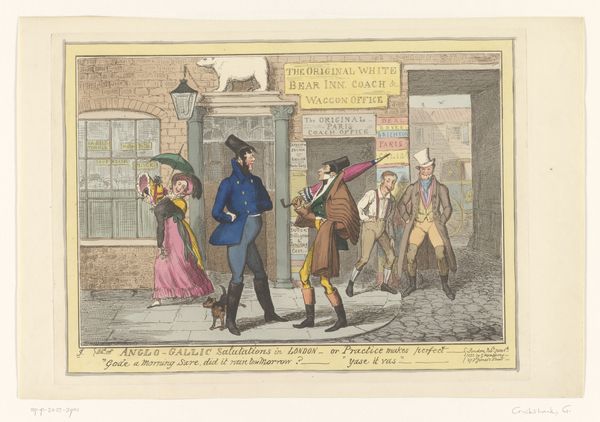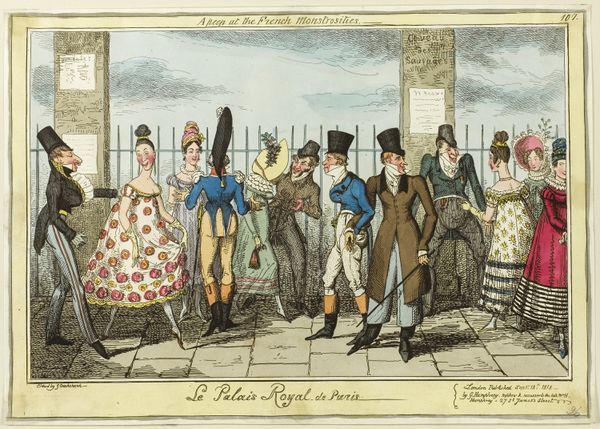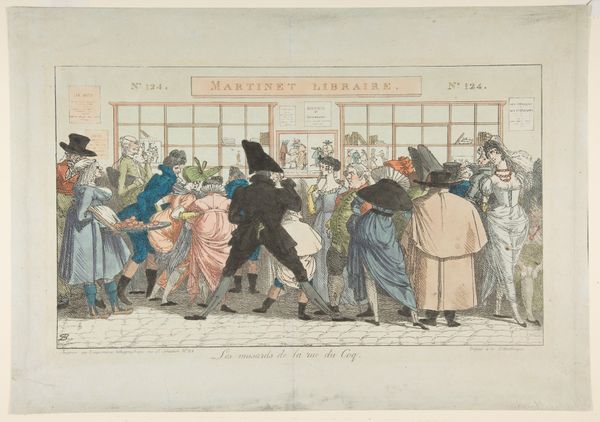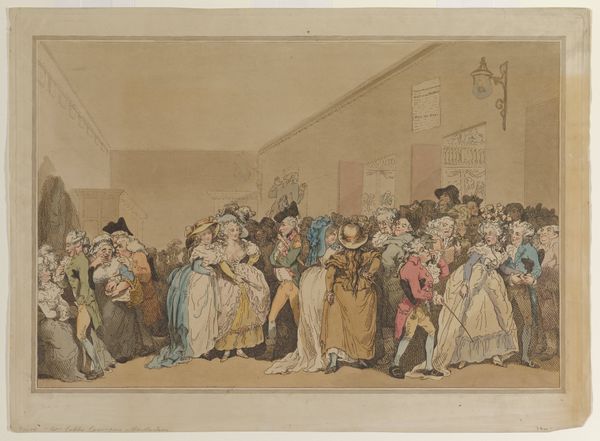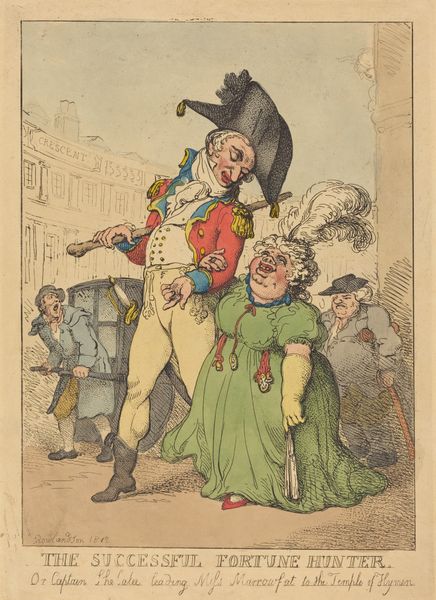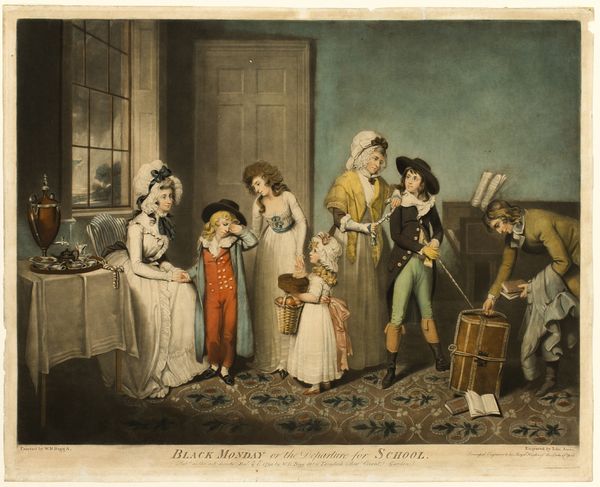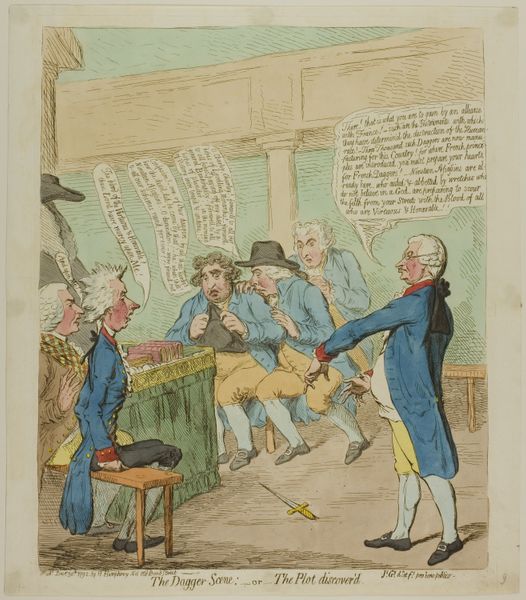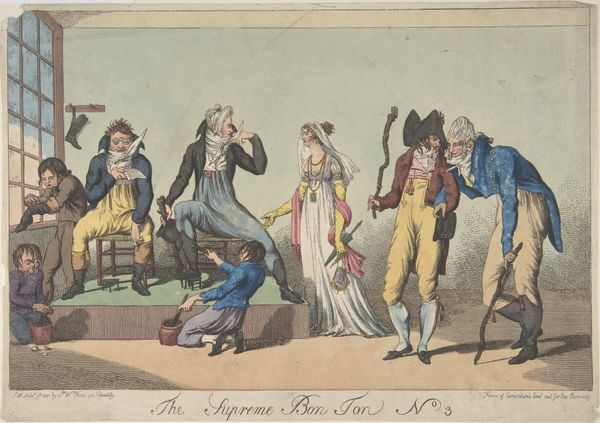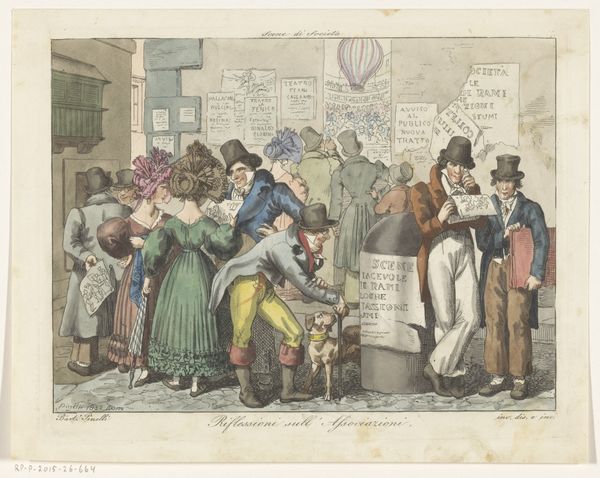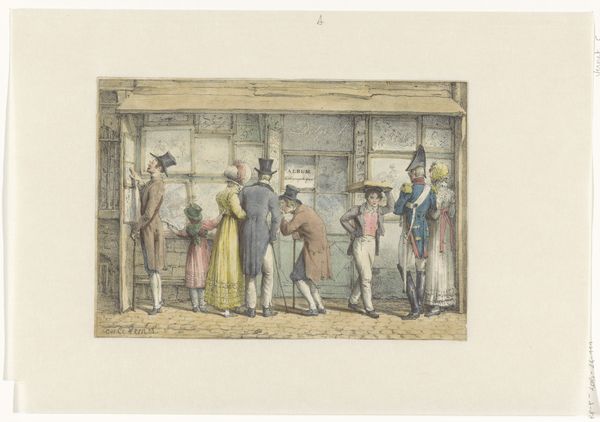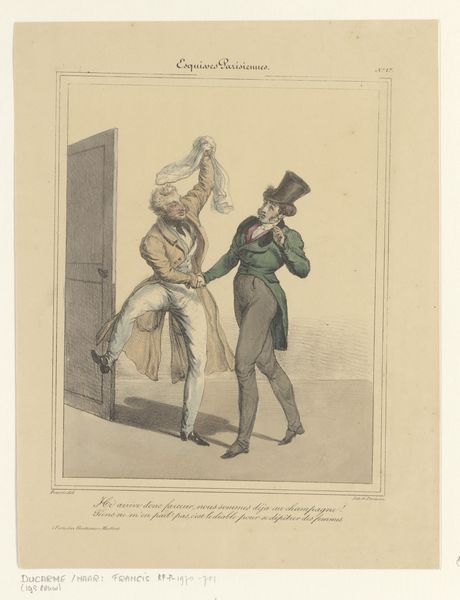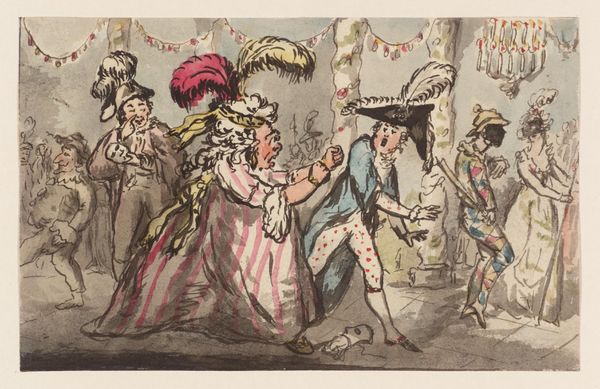
drawing, print, etching, pen
#
drawing
# print
#
etching
#
caricature
#
coloured pencil
#
romanticism
#
pen
#
genre-painting
#
watercolor
Dimensions: height 227 mm, width 325 mm
Copyright: Rijks Museum: Open Domain
Curator: Let’s turn our attention to “Man wordt bestolen voor een prenthandel,” a colored etching and print made around 1818 by Isaac Cruikshank and housed right here at the Rijksmuseum. The title translates to “Man is robbed in front of a print shop.” Editor: My first impression is chaos! There's a sense of unrestrained energy in the exaggerated features and postures. And the vibrant colours amplify the satirical bite. Curator: Absolutely. Cruikshank was known for his satirical prints that skewered social and political life of his time, frequently taking aim at the wealthy and corrupt. Consider the backdrop: a print shop displaying images likely reflecting the fashionable elite. Then look at the pickpocket! Editor: He's a visual shorthand for deceit, slinking away with his prize! The contrast between his almost caricatured poverty and the obliviousness of the bourgeois couple gazing at the prints is quite stark. There is such moralizing embedded into such a dynamic scene. The colors enhance the mood. Curator: Note also the significance of what is literally being stolen. It’s not merely a wallet but, presumably, access to the very culture that elevates this social class. The print itself is making an argument. The pickpocket’s crime serves as a critique against socioeconomic imbalance in society and art. Editor: Symbolically, the clothing becomes potent. The fashionable, almost grotesque, excess of the woman's hat, becomes the opposite of the plain dress of the thief. What can we interpret from his dark skin? Curator: Good question. His character is rendered within a larger narrative of oppression where his only option of success involves deceitful acts, or being represented deceitfully. Editor: It’s a powerful snapshot of a specific historical moment, really, but the themes—greed, class disparity, the pretense of culture—resonate across time. Curator: Agreed. I keep thinking about how popular prints like these contributed to shaping public opinion, especially at a time when literacy rates were increasing. They're visual arguments. Editor: I'll never look at a fashion plate quite the same way. What seems frivolous holds so much potential power!
Comments
No comments
Be the first to comment and join the conversation on the ultimate creative platform.
